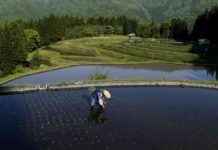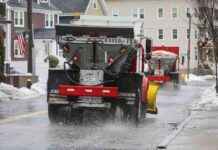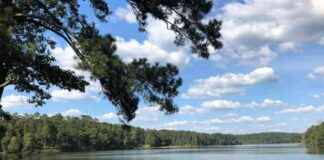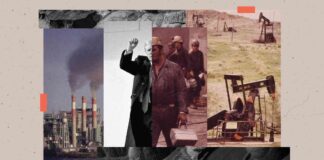**Climate Change and the Impact of Another Polar Vortex on U.S. Weather**
A recent wave of severe winter weather has battered the central United States, bringing freezing temperatures and icy conditions. This comes hot on the heels of a massive winter storm that blanketed cities from Kansas to New Jersey with over a foot of snow, causing traffic chaos and widespread power outages.
According to a new study published in the prestigious journal Nature, there is mounting evidence linking these extreme weather events to climate change. The study, led by climatologist Judah Cohen from Atmospheric and Environmental Research, highlights a strong correlation between the warming Arctic and the increase in severe winter weather in regions like the central U.S., Canada, and parts of Asia and Europe.
### The Impact of a Warming Arctic
Cohen’s research builds upon his previous work, which analyzed meteorological data from U.S. weather stations and compared it to global data sets. The study reveals a concerning trend: as the Arctic region warms at an alarming rate, the frequency of harsh winter weather events is on the rise. This is due to the shrinking temperature difference between the Arctic air mass and warmer air to the south, destabilizing the jet stream and allowing frigid Arctic air to spill into lower latitudes.
### Unpacking the Polar Vortex
Central to this phenomenon is the polar vortex, a swirling mass of cold air that typically remains contained by the jet stream. However, as climate change accelerates Arctic warming, the jet stream weakens, leading to more frequent disruptions that release the polar vortex southward. This has serious implications for regions like the central U.S., where extreme cold and heavy snowfall are becoming more frequent and unpredictable.
### Weather Whiplash and Climate Change
Cohen’s study also sheds light on the phenomenon of “weather whiplash,” where areas like the central U.S. experience drastic temperature swings due to the interplay of the polar vortex and climate change. This can result in record warm spells followed by sudden plunges into frigid conditions, leading to challenges like burst pipes and water damage.
As we grapple with the implications of a changing climate on our weather patterns, it is crucial to consider the scientific evidence and ongoing research in this field. While some skepticism remains, Cohen’s observational approach offers valuable insights into the complex relationship between a warming Arctic and its impact on winter weather in the central U.S. and beyond.
### Supporting Independent Climate Journalism
This article is brought to you by Inside Climate News, a nonprofit organization dedicated to providing free, accessible, and impactful reporting on climate and environmental issues. We rely on donations from readers like you to fund our work and ensure that vital stories like this reach a wide audience. Your support can make a difference in our ongoing efforts to inform, educate, and inspire action on the most pressing crisis of our time.
Let’s continue to stay informed, engaged, and proactive in addressing the challenges of climate change and its far-reaching consequences for our planet and communities. Together, we can make a difference.














